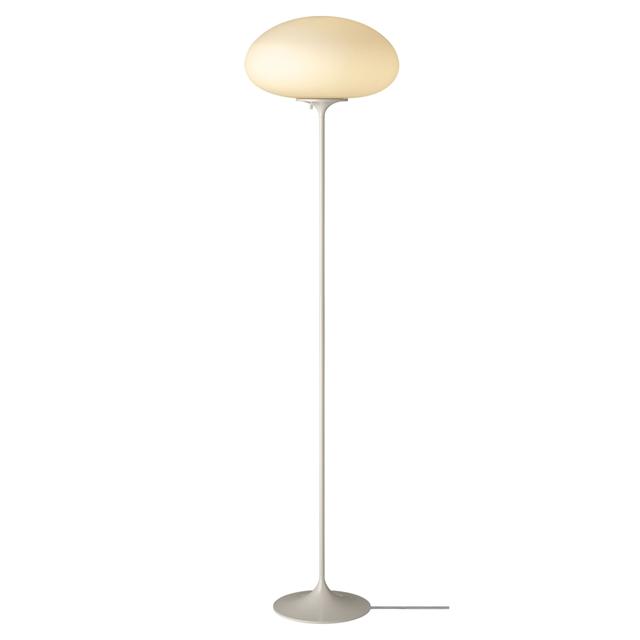GUBI Tune Small Vloerlamp Dimbaar Groot Grijs
Ontwerp: Stemlite ontworpen door Bill Curry, 1962 Concept: Het idee achter het ontwerp voor Stemlite was gebaseerd op de hoop van Bill Curry's kant om de normen voor lampontwerp te kunnen veranderen. Hij wilde een lamp maken die niet bestond uit de destijds zo traditionele lampenvoet, bol-, lampenkap. Curry wilde een lamp maken die de drie componenten combineerde tot een organische, kleurrijke lamp. Die wens resulteerde in de eerste ''Total look'' lamp, Stemlite . Het ontwerp is geïnspireerd op bloemen die met hun sterke maar dunne stelen een zwaar bloemhoofd rechtop kunnen houden. Dit is ook te zien aan de metaal voet die de stelen van een tulp nabootst. Via de mondgeblazen glazen bol bovenop geeft Stemlite een rustig en aangenaam diffuus licht uit. Stemlite was de bestverkochte collectie van Bill Curry en werd in de jaren zestig ook gebruikt om Amerikaans design te presenteren in de Sovjet-Unie, Joegoslavië en Irak. Stemlite is weer tot leven gebracht door GUBI om de wereld opnieuw kennis te laten maken met het geweldige werk van Bill Curry. De Stemlite collectie is verkrijgbaar als tafellamp, vloerlamp, wandlamp en hanglamp. Alle fæs met een ingebouwde dimbare functie.
GUBI Stemlite Floor Lamp - H150 (Pebble Grey, Frosted Glass)
The Stemlite (1962) was the first ‘total look’ lamp, a pioneering new typology conceived by American Designer Bill Curry, which replaced the traditional base-plus-shade form with a single self-contained unit comprising interchangeable modules. His debut design, the much-emulated Stemlite, was named “most influential lamp of the year” by Industrial Design Magazine in 1965, used on the set of the original Star Trek TV series, and remained in pro- duction until 1977. Now remastered by GUBI after almost half a century, the new collection comprises two table lamps, two floor lamps and a new pendant – a simple inversion of the original design – in a contemporary yet authentic color palette. Today’s Stemlite remains true to Curry’s designs, comprising three of the original heights: two table heights, one of which was originally conceived as a floor lamp and the original floor lamp height. A second, taller floor lamp has been added and a pendant light has been engi- neered by simply flipping the original design upside-down. A counterweight has been hidden in the negative space created by the geometry of the foot of the upright lamps to meet con- temporary safety requirements regarding stability and versions of the floor and pendant lights with new larger globes are also available.

